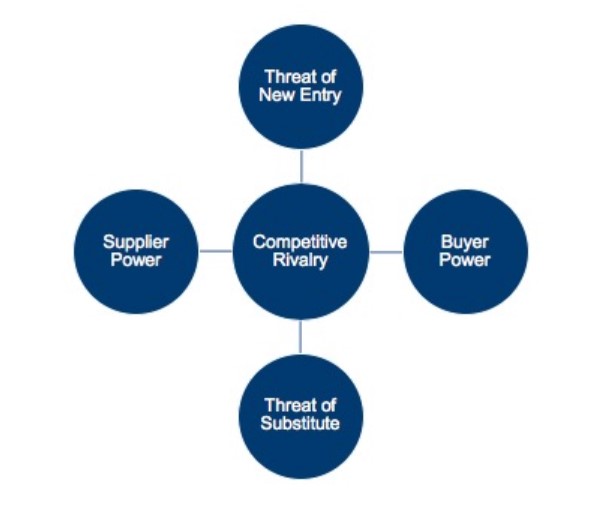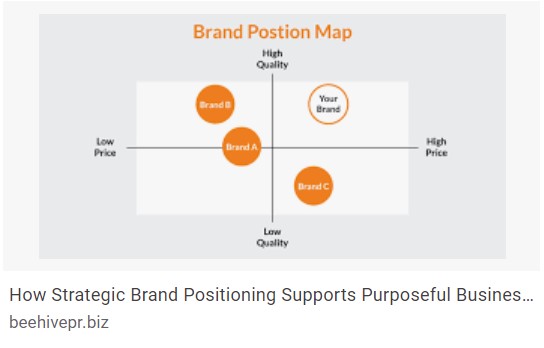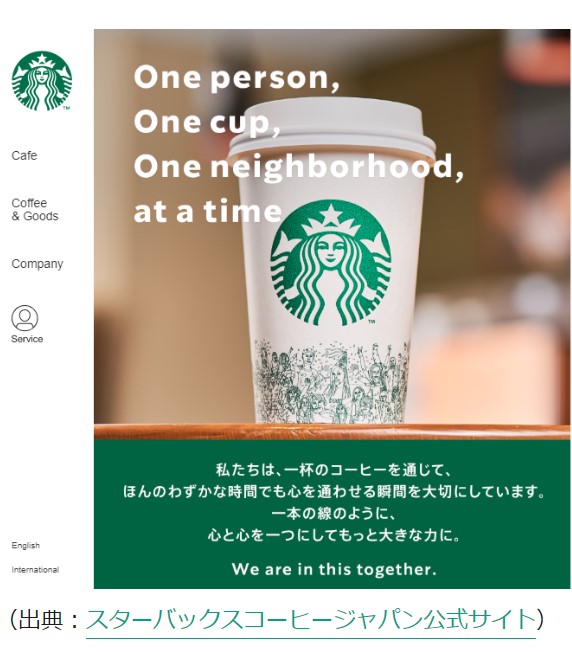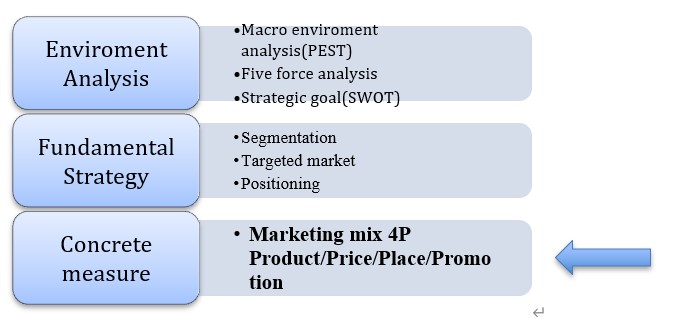Introduction-What is Just Walk Out Shopping?
Amazon’s Just Walk Out Technology automatically detects when an item is taken off the shelf or put back on the shelf and keeps track of it in a virtual cart. When the customer is finished shopping, they can leave the store without paying. Amazon will later send the customer a receipt and charge it to their Amazon account.
The customer needs an Amazon account, the free Amazon Shopping app, and a recent generation iPhone or Android phone. When a customer arrives at the Amazon Go store, they open the app, tap “Store Code,” and scan in the QR code that appears. No lines, no checkout. When they are done shopping, they can leave. (Amazon, 2019)
Advances in artificial intelligence offer companies a better way to do so; AI can help build more effective marketing strategies. This paper intends to find out how AI affects Marketing strategy.
What is Strategic Marketing?
The marketing concept applies to all comprise of exchange, whether goods, services, places, or ideas. It also applies to all exchanges, whether between individuals, for-profit or non-profit companies, governments, or NGOs. (Achrol and Kotler, 2011)
Marketing strategy is defined as the four core principles of analysis, resource allocation, action planning, and performance evaluation that a company must follow to be profitable.(Hsu et al., 2021)
In recent years, as the digital society progresses and consumers connect with various people on social networking services and shop online daily, digital marketing is now in demand. (M Wada,N Onzo, T Miura., 2022)
Organizations intend to shift their attention from “traditional advertising” to a new approach of “Digital marketing.”
Marketing Planning Process
The marketing process model of Philip Kotler consists of five steps, starting with the market and environmental research. After fixing the target and setting the strategy, they are realized by the marketing mix in step 4. The last step is marketing control. (Studies and College, n.d.)
What is Branding?
“A brand is a name, design, symbol, or other characteristics that distinguishes one seller’s goods or services from those of another” (American Marketing Association).
A brand can be considered the idea or image that people bring to mind when they think about a company’s particular product, service, or activity. Thus, it is not only the physical characteristics that form a brand but also the feelings that consumers have about the company and its products. This combination of physical and emotional cues is triggered when they are exposed to the name, logo, visual identity, or message being conveyed. (Marion, 2018)
Amazon has become synonymous with online shopping. Amazon is one of the most recognizable companies globally, occupying and serving more global territories than any other organization. As the world’s largest e-commerce store, it may seem challenging to brand a store that sells “everything,” but Amazon does it very well. (Carter, 2014) Amazon has leveraged digital for both brand building and consumer acquisition.
Definition of brand pyramid
The Brand Pyramid is a representational framework that answers fundamental brand and market positioning questions. This framework is beneficial for new brands entering the market for the first time. The framework moves from bottom to bottom with the following elements: characteristics and attributes, functional benefits, emotional benefits, core brand values, and brand essence. (SemiColonWeb, n.d.)
Definition of brand positioning
Part of the branding process involves thinking about brand position. Brand position is the consideration of where its brand currently stands in the marketplace and where it should be positioned relative to its competitors. (Xposure, 2009)
Definition of brand management
Brand management is a concept company that marketers employ to create an emotional bond between customers and their products. Brand management creates an image of a product or brand in the minds of consumers. It is the basis for attracting new customers and building brand loyalty among existing users. (Team, n.d.)
Compared with Rakuten’s business model.
Rakuten Group offers various services, including e-commerce, fintech, digital content, and telecommunications.
Both Rakuten and Amazon started as e-commerce (EC) companies and are often lumped together as they compete, but the two companies have entirely different business models.
Rakuten Ichiba is, as the name suggests, a “marketplace” built on the Internet. It is a virtual shopping mall, and Rakuten earns fees from companies that rent space on the Internet. In other words, it makes money mainly from commissions from companies opening stores, and its customers are companies.
On the other hand, Amazon’s focus is solely on selling products that it purchases itself. There are “marketplaces” where businesses other than their own sell their products, but basically, it carries their inventory and manages their distribution. (PRESIDENT Online(プレジデントオンライン), 2018)
Amazon’s business model is customer-oriented, including increasing new customers and Prime members. Amazon is also working on innovations in purchasing methods with AI speakers and dashboards. In addition, Amazon has also launched a groundbreaking AI-based service. It is called AWS (Amazon web service). Currently, this AWS offers three AI services, two of which are available in Japan. AWS is the only cloud technology, partner ecosystem, and industry experience to help marketers achieve innovative marketing results at any scale. (Amazon Web Services, Inc., n.d.) Amazon has started a business that provides digital marketing systems that incorporates AI and other technologies into marketing strategies will become necessary.
Amazon’s AI and digital innovations may reinforce to expand of their share and market.
Environmental Analysis
The PESTLE analysis provides a framework for examining and analyzing an organization’s external environment. The framework identifies six key areas to consider when identifying the causes of change. (Cadle, Paul and Turner, 2011)
Political : An example of a political factor is the possibility of a change of government including the possibility of a change of government, accompanied by a change in policy or priorities or the introduction of a new government initiative.
Economic : Economic factors can be limited to one’s own country, but as global trade expands, economic difficulties in one country tend to have broad and often worldwide effects. Examples of economic factors include economic growth and market confidence in the regional economy in which the organization operates. The crisis of subprime mortgages in America in 2008, which subsequently affected the entire world, is an excellent example of an economic situation that affected many organizations.
Social factor: Socio-cultural factors arise from customers and potential customers. These changes are often subtle and may be difficult to predict or identify until they significantly impact.
Examples include demographic issues, such as the increase in working mothers, or consumer behavior patterns, such as the rise of fast fashions.
Technological: This area deals with factors arising from technological developments.
There are two types of technological change. There are IT developments, and there are technological developments that are specific to an industry or market. IT developments can have broad business impacts on different organizations across industries and business areas. In these cases, the potential use-value of the technology is often not recognized. Expanded bandwidth for Internet transactions presents an opportunity for many companies. Identifying these technological advances is critical for organizations to recognize the potential.
Legal: It is essential to consider factors associated with changes in the law. Some legal issues arise from governments, while others are broader in scopes, such as EU laws and global accounting standards. One of the critical challenges in considering the legal component of a PESTLE analysis is recognizing the laws that affect its company.
Environmental : Examples of factors arising from concerns for the natural environment, or “green” issues, include growing concerns about packaging and increasing pollution.
| Political | 1. political stability in developed countries, especially in the U.S. and Europe (opportunity) 2. government support for e-commerce (opportunity/threat) 3. increased government commitment to cyber security (opportunity) |
| Economic | 1. economic stability in developed markets, especially in the U.S. and Europe (opportunity) 2. rising disposable incomes in emerging markets (opportunity) 3. the possibility of a recession in China (threat) |
| Social factor | Increased consumer confidence in developing countries (opportunity)Increased online purchasing habits (opportunity) |
| Technological | Rapid technological obsolescence (threat & opportunity)Increasing efficiencies of IT resources (opportunity)Increasing rates of cyber crime (threat) |
| Legal | Increasing product regulations (opportunity)Changes in import/export regulations (opportunity)Increasing environmental protection regulations for companies (opportunity) |
| Environmental | Growing interest in environmental programs (opportunity)Increased emphasis on sustainability in a business (opportunity)Widespread adoption of low-carbon lifestyles (opportunity) |
Porter’s Five Forces framework approach examines the business area or industry in which the organization operates and identifies potential business pressures on the organization. The analysis resulting from the Five Forces framework is typically applied to a company’s product or service. Michael Porter classifies the potential pressure factors within an industry into five categories. (Cadle, Paul and Turner, 2011)

Industry competitors: Define the level of competition for the product or service in this industry. Does the organization have a competitive advantage, or is it a minor player? Are there multiple competitors that are strong in the industry?
New entrants: Are there obstacles to entry, such as the need for significant funding or expertise? Are there? Is it possible to start an organization offering these products or services without financial support? What are the possibilities for new entrants?
Substitutes: What is the scope of the alternatives? How does the organization position itself relative to suppliers of these alternatives?
Buyers: How many options do buyers have? Can they quickly change suppliers? Do buyers have power in the supplier relationship, or are they tied to the supplier?
Suppliers: How many suppliers does an organization have? Is this a competitive situation that allows the organization to choose its suppliers? Does the supplier have power in the relationship because it operates in an area where supply is limited?
| Competition in the industry (Strong force) | Amazon is operating in a very competitive market. With more players in the market, Amazon faces stiff competition from Wal-Mart, Flipkart, Alibaba, eBay, and others. However, Amazon enjoys economies of scale and great investment options. |
| The threat of new entrants (weak force) | Amazon is a giant in the market and has a powerful brand image. It also has economies of scale, large warehouses, and distribution facilities. It invests heavily in e-commerce solutions, customer service, logistics, and marketing as a large company. Therefore, it is pretty difficult for any company to break through this brand image and establish a prominent position in the market. Thus, the threat of new entrants is shown to be a weak force. |
| The bargaining power of suppliers(moderate force) | Suppliers control the supply of goods for Amazon’s e-commerce operations. However, Amazon controls the supply chain because of the size of its business and the ease with which it can switch suppliers. |
| The bargaining power of customers(Strong force) | In Amazon’s Porter 5 Forces model, buyer bargaining power is medium to high. Amazon succeeded because of customer satisfaction and product quality. Although customer switching costs are meager, substitutes are emerging in vast numbers. Customers have access to information about products and services offered by different suppliers, making it easy to find alternatives. |
| Threat – substitute products or services (Weak Force) | Amazon’s infrastructure, distribution, warehouse network, and service quality are unrivaled |
SWOT analysis is often arranged in a 2 x 2 table or matrix, where internal factors that enhance performance are categorized as strengths and internal impediments as weaknesses. (Leigh, 2010)
Examine strengths, weaknesses, opportunities, and threats of its organization.
| Strength of Amazon Strong brand name Brand valuation Customer-focused Differentiation and Innovation Cost Leadership | Weaknesses of Amazon Employee Morale Seller Relationships Work Culture Physical Presence Tax Avoidance Controversy |
| Opportunities for Amazon Amazon’s Small Business Accelerator Food Industry Self-Driving Technology Package Delivery Podcasting | Threats of Amazon Government Regulations Antitrust Investigations Quality Control Labor exploitation Economic Recession |
When identifying specific marketing objectives that support long-term goals, applying the widely used SMART marketing objectives is common. SMAR stands for Specific, Measurable, Attainable, Relevant, and Time-bound.
- Specific: Clear and focused on one target
Example: set the project to expand market share in Asia.
- Measurable: Quantifiable with an attached metric
Example: to increase market share 20% in Asia by 2025
- Attainable: acheable plan
Example: additional resource to be considered by go-live.
- Relevant: Tied to a marketing goal
Example: development supply chain in the organization
- Time-bound: meet a time line
Example: provide a time line for the project
Segmentation and targeting, and competitive positioning are generally recognized as the foundation of strategic marketing that benefits both consumers and sellers.(Klein, 2016)
Fundamental Strategy
Segmentation
Market segmentation lets companies learn about their customers. It allows companies to focus on specific customer segments rather than mass markets, making planning easier and saving company resources. With a deeper understanding of customer demand and desires, marketing promotion can be customized for the customer segments that are most valuable and most likely to purchase the product.
4 Types of Market Segmentation (Yesbeck, 2019)
l Demographic Segmentation: Demographic segmentation is the most generally applied to market segmentation. It is based on the statistical data about a group of people.
Examples
- Age
- Gender
- Income
- Location
- Family Situation
- Annual Income
- Education
- Ethnicity
l Psychographic Segmentation : Psychographic segmentation classifies audiences or customers by factors related to their personality and characteristics.
Examples
- Personality traits
- Values
- Attitudes
- Interests
- Lifestyles
- Psychological influences
- Subconscious and conscious beliefs
- Motivations
- Priorities
l Behavioral Segmentation : Whereas demographic and psychographic segmentation focuses on who the customer is, behavioral segmentation focuses on how the customer behaves.
Examples
- Purchasing habits
- Spending habits
- User status
- Brand interactions
l Geographic Segmentation : Geographic segmentation is the simplest practice of market segmentation. It classifies customers based on geographic boundaries.
Examples
- ZIP code
- City
- Country
- Radius around a certain location
- Climate
- Urban or rural
Brand Positioning
Kotler defined brand positioning as designing a company’s offerings and image a unique positioning in the minds of its target market.
Brand positioning is the steps of creating an original image, distinctive characteristics, positive associations, and values in consumers’ minds to create a sustainable trademark image and secure consumer attachment to this trademark. The implementation of the corporate strategy of positioning consists of nine primary stages: 1) external and internal environment and product analysis; 2) trademark design; 3) selection and inference of differentiating positioning characteristics; 4) strategy definition (description of positioning methods); 5) definition of strategic and tactical goals and foresight for their achievement; 6) implementation The following three steps were taken: 7) strategy implementation, 8) evaluation of results and management of strategy implementation, and 9) corrective actions. (Fayvishenko, 2018)
Amazon has positioned itself as a glocal (Go global Act local) e-commerce giant, where the customer is able to buy anything and have it delivered to any remote location.
Amazon GO is a brand extension strategy for Amazon. A brand extension strategy leverages a parent brand to enter a new product category. Compared to launching a new brand, this approach adds value and reduces risk and cost. This strategy is common in firms where current brand equity is strong enough to impact the existing customer base and brand loyalty and increase profits from new product category offerings.
Given its current competitive advantage in the online retail business, can Amazon replicate this success in the offline market? Amazon Offline marketing managers have the opportunity to differentiate their overall value proposition from their competitors’ products, such as Tesco or Sainsbury’s.
To ensure the effectiveness of positioning, the brand should be aware of the competition in the market and what strategies the rivals are using to position their product. (Nanda and Datta, 2019)
Identifying a brand positioning and growing the business, organizations should start with the end goal. They should consider the following Where is the organization trying to go? How will the brand help the company reach its purpose and mission and achieve its goals? What actions does the organization need to take daily to align with the brand promise?
A competitive landscape analysis helps an organization evaluate its key competitors and assess its brand’s current position in the marketplace. (Beehive, 2021)
– Who are the top competitors ?
– How is the company’s brand currently positioned relative to these competitors?
– Is that positioning consistent with the strategic direction the organization is heading?
– If not, what are the areas of ownership that the organization can claim?

Successful Brand Positioning examples
Starbucks is positioned as a relaxing and stylish “third space. Starbucks has a higher price range than other café chains. Starbucks has achieved a steadfast position in the café industry because it is a café where the customers can drink coffee “while relaxing” in a “stylish space.
The company has established a unique position not by being “casual” or “cheap” but by offering the value of “relaxing and drinking coffee in an upscale space. (Musubuライブラリ | BtoBをハックする BtoB大百科, 2020)

Pocari Sweat pioneered the “sports drink” market and established a new position as a “soft drink.” The company successfully established a “healthy drinking water” position in the soft drink market. It successfully leveraged its image in the sports drink market to create a new position in the following markets.(Musubuライブラリ | BtoBをハックする BtoB大百科, 2020)

Concrete Measure
Positioning of Marketing Mix in marketing strategy

After identifying the market and gathering basic information about it, the next step is to determine the direction of market programming, the means, and strategies to meet customer needs and competitive challenges. The marketing mix combines various marketing decision variables used by a company to sell its products and services. The marketing mix contains four elements: product, price, place, and promotion. A valuable formula for marketing operations is that most marketing mixes change according to marketing conditions and in response to changing environmental factors. Details are as follows. (Singh, 2012)
Product: A product is a physical product or service that consumers are prepared to pay it. It includes tangible goods such as furniture, clothing, groceries, and intangible goods like services, which consumers purchase. Products are an essential component of any marketing mix.
Price : Price is the amount of money a consumer must exchange for an offering. The product price depends on various factors and is constantly changing; pricing should be dynamic.An essential element in pricing is determining the cost of the product.
The costs are involved in distribution, advertising, and any price fluctuation.
Promotion: Promotion is one of the most potent elements of the marketing mix. Promotional activities include advertising, public relations, exhibits, and demonstrations. The marketing manager determines the level of promotional marketing expenditures, and Promotional activities are intended primarily to complement personal selling, advertising, and public relations. Promotions are used to achieve the company’s marketing objectives.
Place: It includes distribution channels, warehouse facilities, means of transportation, and inventory management and is the mechanism by which goods and services are delivered from the service provider or manufacturer to the consumer. Since distribution has a significant impact on profitability, businesses must have a good supply chain and logistics management plan for distribution. If the product is a business product, a business team must interact with various clients and ensure product availability for them.
All four variables of the marketing mix are interrelated. Increasing the product’s price will decrease the demand for the product, and fewer distribution points will be needed. On the other hand, the USP of the product will require an entire focus on increasing brand awareness and hence better pricing of the product. Product pricing will also be improved. Finally, the overall marketing mix should be a dynamic model based on customer feedback for improving the product can be improved, and the same can be launched as an upgraded product.
Strategies for marketing mix of 4p
The marketing mix is a company’s most effective strategy for gaining a competitive advantage. It is critical to plan and implement the right marketing mix that meets the needs and demands of customers. The 4P’S mix for competitive advantage is to place the right product, at the right price, in the right place. (Singh, 2012)
Product Mix & Pricing strategy
A product-mix pricing strategy often requires a change in the pricing of a product when the product is part of the production mix. In this case, the company seeks to set prices that maximize profits for the entire product mix.
Five different pricing models can be used in a product mix pricing strategy. They are as follows. (Kenton, 2021)
– Bundled Pricing : Multiple products are bundled together and offered at a discount. It includes telecommunications carriers that bundle television, telephone, Internet, and fast-food restaurants that bundle hamburger, fries, and soda.
– Captive Pricing : When a product requires certain accessories to work correctly, an electric toothbrush or inkjet printer may be inexpensive, but replacement brushes and print cartridges are sold at a higher profit margin.
– Line Price : Products are typically categorized into different product lines based on quality. Single rooms in a hotel are priced uniformly, double rooms are a higher price, and executive suites are even more expensive, disproportionate to the size and amenities offered.
– Optional Pricing : Base products are sold at relatively low-profit margins, while add-ons are offered at considerably higher options. For example, upgrading the memory in a smartphone or tablet device can cost several hundred dollars more than the actual cost of the memory.
– By-product pricing : A by-product price is set when the manufacturer of a particular product can be sold rather than disposed of it. For example, food manufacturers often sell waste products as feed.
Amazon – Marketing Mix
Amazon.com, Inc. uses the marketing mix as a powerful approach to attract consumers to its e-commerce site. A company’s marketing mix or 4Ps (Product, Place, Promotion, Price) is the combination of strategies and tactics used to execute its marketing plan. In this regard, Amazon approaches its online target market with a marketing mix that focuses on its key selling points’ place and price components. As the world’s largest e-commerce organization, Amazon is constantly faced with increasing competition, which can reduce the company’s market share and global growth potential. The company needs to ensure that its marketing mix is up-to-date with market trends to address this issue. With the right marketing mix, the company can help the organization become more resilient while at the same time supporting innovations that will increase the long-term competitiveness of its online retail business. Details are as follows (FERGUSON, 2017)
Amazon.com’s Products (Product Mix)
As a leading company in the online retail industry, the company offers a wide assortment of products. This product mix supports Amazon.com Inc.’s mission and vision statements. Amazon’s product mix supports the company’s mission and vision statements, and through continuous expansion and diversification, the company offers a various variety of products to meet market needs in addition to online retail.
- Retail service
- Retail goods
- Amazon Prime
- Consumer electronics
- Digital content distribution service
- Amazon Video
- Amazon Web Services (AWS)
- Amazon Publishing
- AmazonFresh
- Amazon Prime Pantry
- Amazon Dash
- Video Direct
Place in Amazon’s Marketing Mix
Identifying the means to reach target customers is a component of this marketing mix. Amazon.com is primarily an online business organization. Nonetheless, the company uses the following locations to reach its e-commerce customers.
Amazon uses official e-commerce websites as the primary venues for business with its customers. These websites include Amazon.com, Audible.com (a subsidiary), and several other sites targeted to specific markets. The company also operates a bookstore in Seattle called Amazon Books, which reaches out to customers who want to see the products in person. In addition, the company uses other venues to conduct temporary transactions with its customers. For example, Amazon Web Services (AWS) Summits, held annually in various locations, allow the company to approach potential customers and persuade them to pay for its e-commerce services.
- Official e-commerce websites
- Amazon Books
- Others
Amazon’s Prices and Pricing Strategies
This marketing mix component focuses on the price levels and pricing strategies that companies use to sell their products. Amazon.com uses low prices to attract customers to its e-commerce website and product offerings. However, given the diversity of the company’s product offerings, the following pricing strategies are used.
- Market-oriented pricing strategy
- Price discrimination strategy
- Value-based pricing strategy
Amazon’s Promotion (Promotional Mix)
The components of this marketing mix include the strategies and tactics a company uses to communicate with its target market. Amazon.com aims to get customers to visit its website and pay for its online services. Depending on the importance of the company’s e-commerce business, the following strategies and tactics will be used in this promotional mix
- Advertising (most important)
- Sales promotions
- Public relations
- Direct marketing
Amazon Go – Marketing Mix
Product: Does the product meet customer needs and provide value?
Amazon Go offers most items available at convenience stores. Such as Hot Breakfast – Local Bakery, Sandwiches, Salads, Soft drinks, Coffee, Espresso, Wine & Beer. However, Amazon Go does not have as large a selection as the major supermarkets. Amazon GO is positioned between a convenience store and a giant supermarket in product selection.
If the target customers are people working in office districts or singles, the selection of products does not need to be on par with giant supermarkets; convenience and ease of use are essential.
Price: Is the price reasonable for the customer? Cost considers not only price but also time cost.
Actual stores must have store staff. Labor costs mainly affect costs, but Amazon GO can reduce labor costs. If that amount is reflected in the products sold, it can achieve lower prices compared to competing stores.
By eliminating cash registers from stores, the customer no longer has to wait in line to buy things, contributing to customer time savings.
Place: Is distribution convenient for the customer?
The target demographic is people working in office districts or singles living in the city center. It is convenient for them to purchase food and beverages in their busy daily lives easily. Therefore, it is appropriate for the location to be in the city center or an office district.
If Amazon Offline requires a higher market development effort, it would be wise to include a channel partner with the know-how and skills to enter new markets.
Promotion: Is promotion a one-way communication? Does it convince the customer?
Amazon’s data marketing is the tool to obtain the information collected in a way that a POS system could not.
Amazon Go is a cashier-less store that uses sensors throughout the store, and its most significant value lies in its ability to collect a variety of information about its customers. The most outstanding value is collecting information about all customers, such as who bought the product, whom they came with, what they were wearing, and what the customer did not buy once they had it in their hands.
Conclusion
Supermarkets without cash registers are an excellent service from a convenience standpoint. The question arises from a perspective of customer satisfaction: do customers only want convenience?
For singles or office workers with busy lives, supermarkets without cash registers are a significant advantage in that they can avoid the hassle of interacting with other people and shop with ease.
On the other hand, dealing with mental health and loneliness in a pandemic is now a serious topic. Loneliness is growing, especially among singles and the elderly.
Major supermarket companies, such as Carrefour in France and Jumbo in the Netherlands, are widely opening “talking cash registers” to reduce loneliness during a prolonged pandemic. The rule is that people who pay at these checkout counters can make small talk with the cashier for a while. In Europe, it was initially customary to exchange greetings with cashiers, and regular shoppers would have some conversation with them, but during the lockdown, when people were required to “get their shopping done quickly,” they became hesitant to do so. On the other hand, grocery stores were one of the few places where people could interact with others during the lockdown. With the advent of self-checkout and even cashier-less supermarkets, the “talking cashier” may seem like a step backward in time. However, a smile and a chat with a cashier can brighten up a lonely and gloomy mood for some people. The “Talking Cashier” cashiers take pride in cheering up customers by giving them a warm greeting. The warmth of the human touch provides added value that cannot be found in stores that sell products at reasonable prices or with conventional systems. While the digitalization of the market has made it more convenient and easy, the popularity of “talking cash registers” leaves room for a renewed consideration of the value of the services that customers want.
Reference
Rakuten, Inc. (n.d.). Corporate Philosophy. [online] Available at: https://global.rakuten.com/corp/about/philosophy/.
Achrol, R.S. and Kotler, P. (2011). Frontiers of the marketing paradigm in the third millennium. Journal of the Academy of Marketing Science, [online] 40(1), pp.35–52. Available at: https://link.springer.com/article/10.1007%2Fs11747-011-0255-4 [Accessed 21 April. 2022].
Hsu, T.-H., Her, S.-T., Chang, Y.-H. and Hou, J.-J. (2021). The Application of an Innovative Marketing Strategy MADM Model—SIVA-Need: A Case Study of Apple Company. International Journal of Electronic Commerce Studies, [online] 13(1), pp.33–68. Available at: http://academic-pub.org/ojs/index.php/ijecs/article/view/1972/433 [Accessed 21 April. 2022].
Amazon (2019). Amazon Go. [online] Amazon.com. Available at: https://www.amazon.com/b?ie=UTF8&node=16008589011.[Accessed 21 April 2022]
Studies, G. and College, G.S. (n.d.). Marketing Plans and Strategies. granite.pressbooks.pub. [online] Available at: https://granite.pressbooks.pub/ld823/chapter/18/.[Accessed 21 April 2022]
M Wada,N Onzo, T Miura., 2022.Marketing Strategy, 6th ed.Tokyo:Yuhikaku Publishing Co., Ltd.
Marion (2018). What Is Branding? | The Branding Journal. [online] The Branding Journal. Available at: https://www.thebrandingjournal.com/2015/10/what-is-branding-definition/.[Accessd 21 April 2022]
Carter, L. (2014). Branding Amazon: 3 Lessons to Learn For Your Brand Success. [online] Persona Design. Available at: https://www.personadesign.ie/branding-amazon-3-lessons-to-learn-for-your-brand-success/.
SemiColonWeb (n.d.). Brand Pyramid Template | 7,000+ Templates | PowerSlides®. [online] Powerslides. Available at: https://powerslides.com/powerpoint-shapes/pyramids-templates/brand-pyramid/ [Accessed 21 Apr. 2022].
Xposure. (2009). Brand positioning example from Xposure. [online] Available at: https://xposurecreative.uk/2009/10/23/brand-positioning-example/ [Accessed 21 Apr. 2022].
Team, M.S. (n.d.). Brand Management Definition, Importance & Example | Marketing Dictionary. [online] MBA Skool-Study.Learn.Share. Available at: https://www.mbaskool.com/business-concepts/marketing-and-strategy-terms/10533-brand-management.html.
PRESIDENT Online(プレジデントオンライン). (2018). アマゾンに楽天が”一生追いつけない”理由 ビジネスモデルの差が成長力の差に. [online] Available at: https://president.jp/articles/-/26249?page=1 [Accessed 21 Apr. 2022].
Amazon Web Services, Inc. (n.d.). AWS クラウド無料利用枠 | AWS. [online] Available at: https://aws.amazon.com/jp/free/?trk=94c18984-27d1-4395-8dae-cdbf523f1ae5&sc_channel=ps&sc_campaign=acquisition&sc_medium=ACQ-P [Accessed 21 Apr. 2022].
Cadle, J., Paul, D. and Turner, P. (2011). Business analysis techniques 72 essential tools for success. Swindon British Informatics Society Limited.
Greenspan, R. (2019). Amazon.com Inc. PESTEL/PESTLE Analysis, Recommendations – Panmore Institute. [online] Panmore Institute. Available at: http://panmore.com/amazon-com-inc-pestel-pestle-analysis-recommendations.[Accessed 24 April 2022]
Edrawsoft. (n.d.). Amazon Porter’s Five Forces Analysis | EdrawMax Online. [online] Available at: https://www.edrawmax.com/article/amazon-porters-five-forces-analysis.html [Accessed 24 Apr. 2022].
Leigh, D. (2010). SWOT Analysis. Handbook of Improving Performance in the Workplace: Volumes 1-3, [online] 1-3(2), pp.115–140. Available at: https://onlinelibrary.wiley.com/doi/abs/10.1002/9780470592663.ch24.[Accessed 24 April 2022]
MadHav (2022). Amazon SWOT Analysis 2021 | SEOAves. [online] Seoaves. Available at: https://seoaves.com/amazon-swot-analysis/.[Accessed 24 April 2022]
Klein, T.A. (2016). Exploring the ethical and societal implications of market segmentation and targeting: Macromarketing and distributive justice perspectives. Social Business, 6(2), pp.109–124.
Yesbeck, J. (2019). 4 Types of Market Segmentation with Examples. [online] Alexa Blog. Available at: https://blog.alexa.com/types-of-market-segmentation/.[Accessed 24 April 2022]
Fayvishenko, D. (2018). FORMATION OF BRAND POSITIONING STRATEGY. Baltic Journal of Economic Studies, [online] 4(2), pp.245–248. Available at: http://baltijapublishing.lv/index.php/issue/article/view/407. [Accessed 24 April 2022]
Nanda, K. and Datta (2019). Brand Positioning -A Study on ‘Amazon’ And Its Consumer Perception. International Journal of Latest Technology in Engineering, [online] VIII. Available at: https://www.ijltemas.in/DigitalLibrary/Vol.8Issue4/08-15.pdf.[Accessed 24 April 2022]
Musubuライブラリ | BtoBをハックする BtoB大百科. (2020). ブランドポジショニングとは?決め方や効果を事例付きで徹底解説 | Musubuライブラリ. [online] Available at: https://library.musubu.in/articles/10281 [Accessed 24 Apr. 2022].
Beehive. (2021). How Strategic Brand Positioning Supports Purposeful Business Growth. [online] Available at: https://beehivepr.biz/brand-positioning/.[Accessed 24 April 2022]
Singh, M. (2012). Marketing Mix of 4P’S for Competitive Advantage. IOSR Journal of Business and Management, [online] 3(6), pp.40–45. Available at: https://www.academia.edu/33744456/Marketing_Mix_of_4PS_for_Competitive_Advantage?from=cover_page.[Accessed 25 April 2022]
Kenton, W. (2021). Product Mix Pricing Strategies. [online] smallbusiness.chron.com. Available at: https://smallbusiness.chron.com/product-mix-pricing-strategies-4689.html [Accessed 25 Apr. 2022].
FERGUSON, E. (2017). Amazon.com Inc.’s Marketing Mix (4Ps) Analysis – Panmore Institute. [online] Panmore Institute. Available at: http://panmore.com/amazon-com-inc-marketing-mix-4ps-analysis.[Accessed 25 April 2022]
征志小野塚 (2019). 花王・アマゾン・アスクルの事例に学ぶ、デマンドチェーンマネジメントの重要性. [online] MONOist. Available at: https://monoist.itmedia.co.jp/mn/articles/1910/15/news005_2.html [Accessed 26 Apr. 2022].
